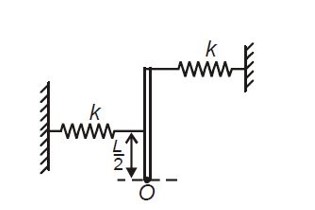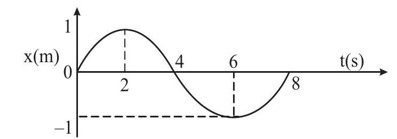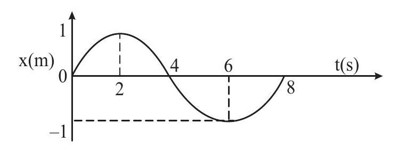Physics Oscillations
Get insights from 123 questions on Physics Oscillations, answered by students, alumni, and experts. You may also ask and answer any question you like about Physics Oscillations
Follow Ask QuestionQuestions
Discussions
Active Users
Followers
New answer posted
2 months agoContributor-Level 10
Given mg = kL
∴ Iα = (kLθ.L + k (L/2)²θ - mg (L/2)θ)
(mL²/3)α = kL² (3/4)θ (restoring torque)
α = (9k/4m)θ
∴ ω = (3/2)√ (k/m)
New answer posted
2 months agoContributor-Level 10
y = A sin (2πt/T)
t? - t? = (T/2π) [sin? ¹ (x? /A) - sin? ¹ (x? /A)]
New answer posted
2 months agoContributor-Level 10
Displacement equation of SHM of frequency ' '
Now,
Potential energy
So frequency of potential energy
New answer posted
2 months agoContributor-Level 10
(A) sin (ωt) + cos (ωt) = √2 sin (ωt + π/4) ⇒ T = 2π/ω
(B) sin² (ωt) = 1/2 - (1/2)cos (2ωt) ⇒ T = 2π/ (2ω) = π/ω
(C) 3cos (π/4 - 2ωt) ⇒ T = 2π/ (2ω) = π/ω
(D) cos (ωt) + cos (2ωt) + cos (3ωt)
Time period of cos (ωt) = 2π/ω
Time period of cos (2ωt) = 2π/ (2ω)
Time period of cos (3ωt) = 2π/ (3ω)
Time period of combined function = 2π/ω
New answer posted
2 months agoContributor-Level 9
While the particle moves from mean position to displacement, half of its amplitude, its phase changes by π/6 rad. So,
Time taken, t = (π/6)/ω = T/12 = (2/12)s = (1/6)s
a = 6
Taking an Exam? Selecting a College?
Get authentic answers from experts, students and alumni that you won't find anywhere else
Sign Up on ShikshaOn Shiksha, get access to
- 65k Colleges
- 1.2k Exams
- 679k Reviews
- 1800k Answers



